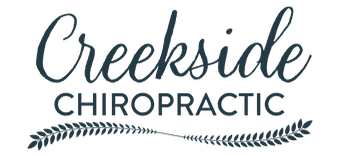We all have a skeptical bone in our bodies. Whether it’s political promises, product endorsements, or simply a claim from a friend, we’ve all experienced that twinge of doubt. And unfortunately, chiropractic care is no exception when it comes to skeptics and critics. Creekside breaks down 3 common misconceptions about our profession.
Let’s start with a quick look at Chiropractic Facts:
The word ‘Chiropractic’ comes from the Greek words cheir (meaning ‘hand’) and praktos (meaning ‘done’), i.e. Done by Hand. The name was chosen by the developer of chiropractic, Daniel David Palmer.
From his first adjustment in 1895, the science and healing art has grown to more than 60,000 active chiropractic licenses in the United States. All 50 states, the District of Columbia, Puerto Rico, and the U.S. Virgin Islands officially recognize chiropractic as a health care profession. Many other countries also recognize and regulate chiropractic, including Canada, Mexico, Great Britain, Australia, Japan and Switzerland*.
Plus research has shown that chiropractic is a proven, drug-free treatment for acute and chronic pain as well as that spinal manipulation may be an effective treatment option for headaches and neck pain.
But why the lingering doubts? Let’s bust some of the most common & misinformed claims about chiropractic:
1. CHIROPRACTIC IS EXPENSIVE
When compared to most visits to the doctor’s office, chiropractic care is actually less expensive.
Chiropractic is widely recognized as one of the most cost-effective, safest, drug-free, non-invasive therapies available for the treatment of neuromusculoskeletal complaints. Researchers have estimated that chiropractic care may reduce the number of Medicare patient visits to primary care medical physicians for neck and / or back pain, resulting in annual savings of $83.5 million.**
When patients figure in that long-term treatment plans can involve medication, surgery, or intensive physical therapy, chiropractic care can often provide a less expensive, natural, and healthy alternative.
2. CHIROPRACTIC CARE IS HARMFUL
This may be one of the most widespread misconceptions of chiropractic care. Many fear seeking chiropractic because they believe it can injure the body and result in more serious complications.
First and foremost, chiropractic is a professional healthcare field, licensed chiropractic doctors (or chiropractic physicians) are considered a primary health care provider for natural medicine. Studies have shown that in patients suffering from low back pain, of those that used spinal manipulation, 94% saw a 30% decrease in pain at week 4 while on only 56% of those taking prescribed medication saw the same result.
Chiropractic treatment is safer than the risks associated with taking prescription pain killers, the risk of addiction to these medications, and most certainly dramatically less than surgery complications.
3. CHIROPRACTORS ARE NOT REAL DOCS
Too many skeptics believe that chiropractors are less qualified and educated than medical doctors. Chiropractors attend FOUR years of undergraduate school and go on to receive their doctorate after another four to five years of studies. They must also pass State and National board certifications to become licensed.
According to Spine-Health.com, of the four years of training to be a doctor of chiropractic, two years of basic sciences are required, followed by the need for a successful completion of National Boards, Part 1.
The next 2 years of chiropractic training include the clinical sciences after which National Boards, Part 2 is required.
Part 3 of the National Boards chiropractic training that is necessary if the chiropractor plans to use physiological therapeutics in practice.
Part 4 tests three practical skill areas, including:
- Diagnostic imaging
- Chiropractic technique
- Case management
While doubts may remain, the facts surrounding the chiropractic profession and the medical research and studies proving the therapeutic benefits of chiropractic speak for themselves; including effective treatments for sciatica, headaches, low back pain, ear infections and hypertension.***
*Source: American Chiropractic Association
**Source: ACA Research
***Source: Dr. Axe








